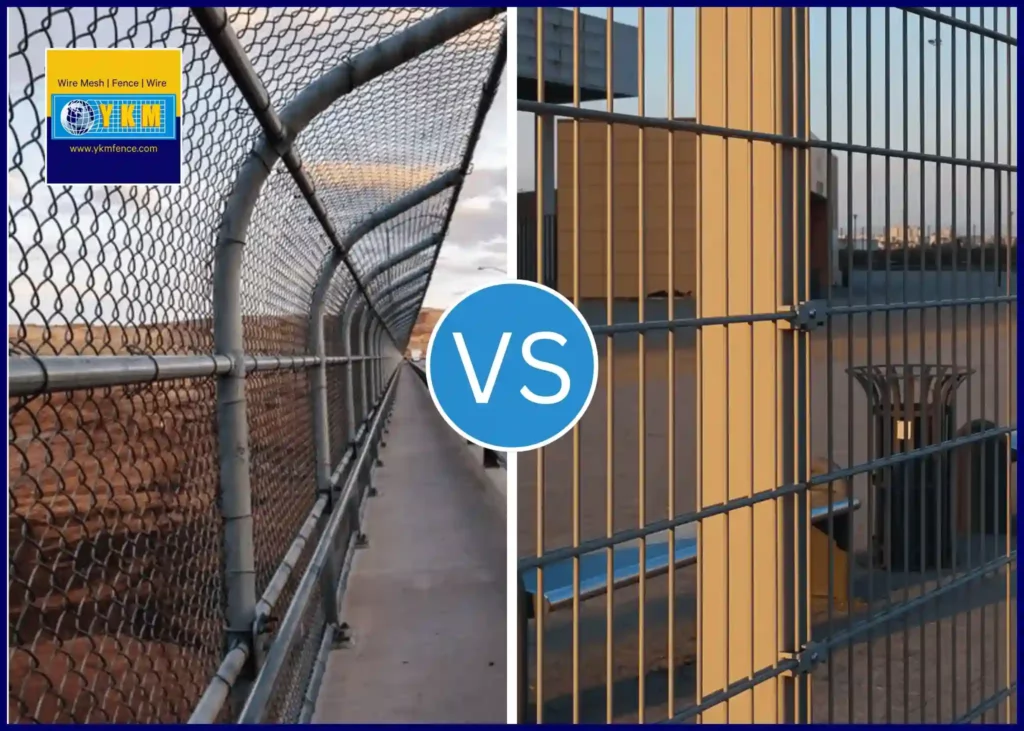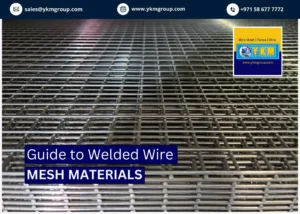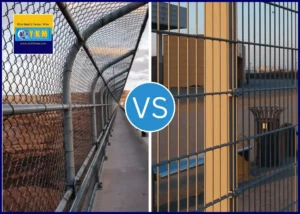Fencing plays a crucial role in safeguarding properties, delineating boundaries, and enhancing security. When considering fencing options, the debate often circles around chain link fence vs welded wire fence. Both serve distinct purposes and offer unique advantages. Let’s dive into a comprehensive comparison to help you make an informed decision that aligns with your requirements.
What are the structural differences when it comes to Chain Link Fences vs Welded Wire Fence?
When it comes to structural comparison on Chain Link Fences vs Welded Wire Fence, the chain link fence is comprised of interwoven wires, providing sturdy and solid boundary.
In welded wire fencing, the wires are welded at intersection creating a solid, durable, and more private boundary.
Chain link fence vs Welded Wire Fence: Side by Side Comparison

When it comes to Chain link fence vs welded wire, Chain link fences are recognized for their durable and versatile interwoven wires pattern forming a diamond shape. These fences offer a balance between security and visibility, making them suitable for various purposes, from residential to commercial applications whereas the welded wire fences are wires welded at intersection, provide robust security while offering a sleek appearance.
Othe basic comparison includes based on:
Residential Uses
- Chain link fences are commonly used in residential settings for their affordability and durability.
- Welded wire fencing suits those seeking a more polished look or increased privacy.
Commercial and Industrial Applications
In commercial and industrial spaces, both fencing types find utility, with chain link fences for large areas and welded wire for specific security needs.
Chain link fences, with their open-weave design, offer visibility, making them suitable for areas where surveillance or observation is essential. They find extensive use in sporting facilities, playgrounds, and industrial settings, providing security without compromising visibility.
In contrast, welded wire fences, with a solid and more opaque structure, cater to applications that demand increased privacy and confinement. Their versatility extends to use in residential properties, animal enclosures, and areas requiring heightened security measures.
Chain link fence vs welded wire: Durability and Strength
- Chain link fences utilize galvanized steel, ensuring resilience against rust and corrosion.
- Welded wire fences employ various materials like stainless steel or PVC-coated wires, enhancing durability.
Withstanding Environmental Factors
Chain link fences endure diverse weather conditions, while welded wire fencing exhibits superior resistance to impacts and bending.
Installation and Maintenance
When considering installation ease between chain link fence vs welded wire fencing, chain link fencing often takes the lead. Its modular design and straightforward installation process make it a cost-effective choice for various projects. Additionally, its low maintenance requirements, primarily limited to occasional inspections and repairs, contribute to its popularity.
Conversely, welded wire fences, while offering robustness, may require professional installation due to their rigid structure. However, once installed, they entail minimal maintenance, making them a long-term investment in terms of both durability and upkeep.
Aesthetics and Customization
- Chain link fences are manufactured offering limited design choices but the privacy of chain-link fence can be improved by adding privacy slats.
Coatings and other color options are available to enhance visual appeal, enabling their integration into residential landscapes without compromising functionality. - Welded wire fences, characterized by a more solid appearance, are often chosen for their sleek and uniform design.
They have many customization options in terms of appearance, gauge, opening, coating and more adding a robust and uniform appeal to those seeking a more polished and cohesive fencing solution.
Security and Privacy
Chain link fences provide visibility, making it easier to monitor surroundings, while welded wire offers increased privacy due to its solid construction.
Cost Comparison
- Chain link fences typically have lower initial costs compared to welded wire fencing, making them more budget friendly.
- However, considering long-term maintenance and durability, welded wire fences might prove to be cost-efficient over time.
Conclusion
In the debate of chain link fence vs welded wire fence, there isn’t a definitive winner. Each fencing type brings distinct advantages, catering to diverse needs. Assessing your priorities in terms of durability, aesthetics, privacy, and cost will guide you towards selecting the ideal fencing solution.
Still having doubt? YKM Fence is one of the expert fencing manufacturer and supplier in UAE and across Middle East with years of experience in fencing manufacturing.
Faq (Frequently Asked Questions)
-
Which is durable when it comes to Chain link fence vs Welded Wire Fence?
Both chain link and welded wire fences have high durability, but the choice depends on the specific environmental factors and intended use.
-
Are welded wire fences more expensive than chain link fences?
Welded wire fences tend to have a higher initial cost but might prove cost-efficient in the long run due to their durability.
-
Do Welded Wire Fences have more customization option when we compare Chain link fence vs Welded Wire Fence?
Welded wire fences provide greater customization in terms of design, height, and color.



